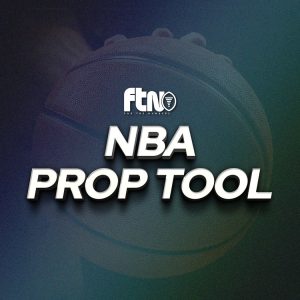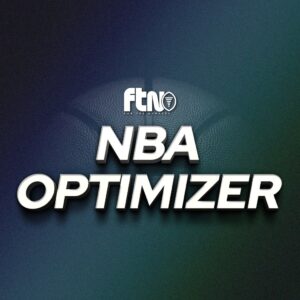
Derrick Henry destroyed the Buffalo Bills on Sunday night. The AFC Offensive Player of the Week got off to a bang from his first touch of the ball, racing 87 yards for a score. He ended up with 199 yards on the ground, 10 in the air and a pair of scores as the Ravens handed their first regular season lopsided loss in years. This comes as part of a rejuvenation season for the 30-year-old running back, who is currently leading the league in both rushing yards and touchdowns. Some have even started suggesting Henry for MVP, because we have to write about something in September.
And yet, despite all that, Henry earned just 7 rushing DYAR against the Bills, with a -2.9% DVOA. And while he’s doing well in the season-long DYAR race, ranking fourth at 75, his 11.3% rushing DVOA has him ‘only’ 13th in the league.
What is it about Henry’s game on Sunday that DVOA didn’t love, at least compared to EPA models and the eye test? And where is Henry excelling – or coming up short – in his quest to finish in the top 10 in rush DVOA for the first time since 2020? Let’s open up StatsHub and dive into the weeds on Henry’s numbers.
Week 4 Review
Why did Henry have a below-average rushing DVOA against the Bills? Because he fumbled at the goal line.
That’s basically it. That fumble cost Henry 22 DYAR, making it the second-least valuable run of Week 4 behind Zamir White’s fumble on third-and-1 against Cleveland. Both plays ended up as touchdowns. It’s just that the defense scooped up White’s fumble and scored a touchdown for the defense, while Henry’s fumble ended up with Patrick Ricard at the bottom of a pile scoring a touchdown for the offense. That makes a huge difference in EPA models. Henry’s fumble was a successful play, with models scoring that at about 0.8 EPA. White’s fumble was a disaster, losing about -8.5 EPA. But DYAR and DVOA do not care about who recovered the fumble; they only care that the fumble happened. Fumbling or forcing fumbling is a skill with predictive value; falling on top of a weirdly shaped ball as it bounces around on the ground is not. The Ravens were fortunate to fall on top of it (and were winning by enough that it probably wouldn’t have mattered either way), but DYAR dings Henry for putting the ball on the ground to begin with.
Take out Henry’s fumble, and his Week 4 rushing numbers bounce up to 29 DYAR, good for sixth place, and a 17.0% DVOA. It would also bump Henry up to second place in rushing DYAR on the year at 97, and seventh place with a 17.8% rushing DVOA. Saying Henry has been the second-most valuable rusher to Saquon Barkley, both in total value and in per-play value among the high-volume backs, feels about right. We’re early in the season, so one bad play can have an outsized effect on someone’s stats. Henry only has 80 carries so far, and fumbling on 1.3% of your rushing snaps would be bad. Henry has occasionally had fumble issues in the past – six in 2022, five in 2019 – but this was his first fumble since 2022, and the impact of the one play will get erased in the wash as we just get larger sample sizes.
The other issue that knocked Henry down some was boom versus bust plays. Henry’s 87-yard touchdown was the single most-valuable running play of the year, earning Henry 28 DYAR. But DYAR does give diminishing returns for long runs, because at a certain point, that becomes a function of field position more than anything else. Once Henry got past Damar Hamlin, he was going to score whether the end zone was 20 yards away, 80 yards away or 200 yards away. So while Henry’s 28 DYAR is the most on any one rushing play of the year, it’s not as big a gap as you’d expect from the raw yardage. James Cook’s 49-yard touchdown against Miami earned 26 DYAR, for example.
While Henry averaged 8.3 yards per attempt against Buffalo, his median carry went for just 2.5 yards. 14 of Henry’s 24 carries went for three or fewer yards, and this wasn’t all short-yardage grunt work, either. In our running back success rate calculations, Henry had a success rate of just 45.8%, 24th among running backs with more than five carries last week. Henry was stuffed (tacked at or behind the line of scrimmage) on 25% of his carries, averaged just 0.6 second-level yards per attempt, and had just a 12.5% avoided tackle rate. It’s not like tackling Henry over and over again doesn’t wear a defense down, even if those plays aren’t gaining many yards – there is a benefit to tiring out a defense like this. You would just prefer for those sorts of runs to be getting 3 or 4 yards a carry, not 1 or 2. Henry’s three explosive runs were fantastic, and they look great on a highlight reel, but they were at least somewhat mitigated by the unsuccessful plays. Without the fumble, there was more than enough boom to still make things a positive day; you will take a few runs right into the line in exchange for 87-, 38- and 25-yard runs. But that’s why his advanced rushing stats weren’t as positive as his traditional stats – he was just too boom-or-bust. But does that hold true for his September as a whole?
September Stats
With his Week 4 performance, Henry has taken first place on the explosive yards leaderboards.
| Explosive Runs Leaders, Weeks 1-4 | ||||||
| Player | Team | Explo Runs |
Explo% | Rk | Explo Yds |
DYAR |
| Derrick Henry | BAL | 10 | 12.5% | 19 | 287 | 126 |
| Saquon Barkley | PHI | 10 | 13.7% | 14 | 243 | 120 |
| J.K. Dobbins | LAC | 9 | 16.1% | 5 | 227 | 108 |
| Jordan Mason | SF | 13 | 14.3% | 8 | 209 | 111 |
| Jonathan Taylor | IND | 11 | 15.3% | 7 | 202 | 111 |
| Josh Jacobs | GB | 9 | 12.7% | 18 | 162 | 82 |
| Aaron Jones | MIN | 9 | 14.1% | 11 | 155 | 75 |
| Alvin Kamara | NO | 11 | 13.8% | 13 | 151 | 80 |
| Brian Robinson | WAS | 7 | 10.6% | 27 | 146 | 67 |
| James Conner | ARI | 9 | 14.1% | 12 | 139 | 63 |
Henry’s explosive run rate is a little low, but if anything, that’s a plus in his column – he can produce a bunch of explosive carries while still absorbing a fairly heavy down-to-down workload. Henry’s 21.3 touches per game are fifth most in the league through the first month, and he’s 10th with a 40.3% touch share of Baltimore’s run-heavy offense. It’s one thing to come in against a tired defense and gash them; it’s another thing entirely to tire that defense out yourself.
And yes, tackling Henry is as annoying as you might think, as you can see from the avoided tackles leaderboards.
| Avoided Tackles, Weeks 1-4 | ||||||
| Player | Team | AT | AT% | YBCO | YACO | Win Yds |
| Jordan Mason | SF | 21 | 23.1% | 1.9 | 3.0 | 272 |
| Derrick Henry | BAL | 20 | 25.0% | 2.7 | 3.3 | 261 |
| Devin Singletary | NYG | 20 | 35.7% | 0.9 | 3.1 | 172 |
| James Conner | ARI | 19 | 29.7% | 1.6 | 3.0 | 195 |
| Rhamondre Stevenson | NE | 19 | 29.2% | 1.1 | 3.0 | 210 |
| Zach Charbonnet | SEA | 18 | 42.9% | 1.0 | 2.7 | 123 |
| Alvin Kamara | NO | 17 | 21.3% | 2.4 | 2.2 | 173 |
| Najee Harris | PIT | 16 | 23.5% | 0.8 | 2.5 | 171 |
| Saquon Barkley | PHI | 15 | 20.5% | 3.2 | 2.8 | 221 |
| Kyren Williams | LAR | 15 | 20.5% | 1.4 | 2.2 | 170 |
| Bijan Robinson | ATL | 15 | 27.3% | 1.5 | 2.5 | 143 |
Some abbreviation explanations:
- AT are avoided tackles, which are broken tackles + non-contact forced missed tackles, so when Henry jukes someone out of their shoes so hard their tackling air, that gets counted, too.
- YBCO and YACO are yards before and after contact, respectively.
- Win Yards are yards after an avoided tackle – yards that would not have been gained had the first defender brought the running back down.
Yeah, it checks out that Henry would be a pain to bring down. This is what was missing against Buffalo; Henry only had three avoided tackles all night. Either the first guy brought Henry down, or there was a gap large enough that no one was in Henry’s ZIP code to even attempt to bring him down. But Henry had 10 the week before against Dallas and that’s a very high variance stat, so that’s nothing to worry about. Henry is also seventh in yards after contact and fourth in yards before contact, which is always a nice pair of stats to rank high in. Against Buffalo, Henry averaged just 2.0 yards after contact; a significant drop from his season average of 3.3. His explosive plays were all ones where he was untouched. 2.0 is closer to Henry’s numbers his last two years in Tennessee; he averaged 2.4 last season per FTN’s charting. 3.3 wouldn’t quite be back to absolute prime, Offensive Player of the Year Henry, but it’s much closer in that direction than we’ve seen in a couple years. That will be a number worth watching going forward; Baltimore would love it if he could continue to run over guys like he could during his best seasons. The Ravens’ offensive line and scheme can give Henry better opportunities than he had the last few years, and that will itself turn into better results, but sometimes you just gotta run through a guy’s face. If Henry can somehow turn the clock back and be like his 26-year-old self for a full season, look out.
Successful and Unsuccessful Runs
All these numbers look great for Henry, so is it really just the fumble keeping him off of the tippy-top of the leaderboard? Actually, there is one more set of tables I want to introduce here. Henry appears near the top of two related tables – the most DYAR gained on successful runs, and the most DYAR lost on unsuccessful runs.
| Most DYAR Gained on Successful Runs | |||||
| Player | Team | Att | Yards | DVOA | DYAR |
| Saquon Barkley | PHI | 43 | 422 | 114.2% | 233 |
| Derrick Henry | BAL | 44 | 446 | 87.7% | 217 |
| Jordan Mason | SF | 48 | 404 | 83.3% | 196 |
| Jonathan Taylor | IND | 35 | 306 | 104.9% | 184 |
| Alvin Kamara | NO | 49 | 345 | 62.8% | 164 |
| Aaron Jones | MIN | 40 | 302 | 80.6% | 160 |
| David Montgomery | DET | 39 | 251 | 72.3% | 156 |
| Kyren Williams | LAR | 38 | 202 | 66.7% | 151 |
| Brian Robinson | WAS | 33 | 279 | 76.4% | 149 |
| Jahmyr Gibbs | DET | 32 | 255 | 90.7% | 149 |
| Most DYAR Lost on Unsuccessful Runs | |||||
| Player | Team | Att | Yards | DVOA | DYAR |
| Jordan Mason | SF | 43 | 43 | -107.3% | -172 |
| Rhamondre Stevenson | NE | 33 | 30 | -129.9% | -158 |
| Derrick Henry | BAL | 36 | 33 | -102.2% | -142 |
| Alvin Kamara | NO | 31 | 17 | -109.7% | -139 |
| Devin Singletary | NYG | 33 | 30 | -119.8% | -127 |
| D'Andre Swift | CHI | 34 | 18 | -101.1% | -126 |
| Zamir White | LV | 37 | 54 | -92.7% | -125 |
| Kyren Williams | LAR | 35 | 56 | -102.6% | -123 |
| Tony Pollard | TEN | 36 | 31 | -101.4% | -123 |
| Devin Achane | MIA | 30 | 0 | -96.8% | -122 |
It is not inherently bad thing to have a bunch of unsuccessful runs, and Henry isn’t the only back on both top 10 lists – Jordan Mason, Alvin Kamara and Kyren Williams join him. Those happen to be four of the five league leaders in carries. If you run the ball a lot, you will have a lot of runs which do not succeed, and some of that is to be expected. Christian McCaffrey was tenth last season with -398 DYAR on failed runs, and his season turned out OK. If you’re on this list as Rhamondre Stevenson, that’s bad. If you’re on this list as Derrick Henry, that’s workload, at least early in the season. Henry still has a solid 55% success rate, good for 12th on the leaderboards.
At the same time, Henry is averaging just 1.0 second-level yard per attempt, ranking 37th out of 50 qualified running backs. Second-level yards are the yards you a running back earns between 5-10 yards past the line of scrimmage … but Henry doesn’t have very many runs in that range. He has a lot of runs for just a couple yards, and then a lot of runs for 10+ yards. It’s rare that Henry has just a good run; it’s either great or a bust. And while being 12th in success rate is good, there are other high-volume backs who are doing better – most notably Saquon Barkley
Barkley is the other back in the top five in carries, and he doesn’t appear on the unsuccessful run table. You’ve got to go all the way down to 16th to find him. Barkley’s on all those other positive tables with Henry – just behind him in explosive runs, lurking on the avoided tackle table, just ahead of him on the successful runs. But he’s had a higher ratio of successful runs, at least according to the adjusted DYAR/DVOA baselines, while still being close to as explosive as Henry has. That – plus a tougher slate of run defenses faced and Henry’s fumble – is why Barkley is way out ahead of the field in terms of rushing DYAR through four weeks, a 44-DYAR gap on Jahmyr Gibbs in second place. Henry has been very good. Barkley has been lights out.
The final twist on that is that last year, Barkley was last with -495 DYAR lost on failed rushes; being slammed into defenses over and over on a terrible Giants team. Henry was third at -450, as Tennessee wasn’t exactly a dynamic offensive powerhouse themselves. Through one month in their new homes, Barkley has taken advantage of the vastly improved situation to raise his floor significantly. So far, Henry has not done the same.
Henry’s doing great, and his oddly low advanced numbers from his big day against Buffalo can mostly be chalked up to one play. Baltimore fans are right to be happy he’s on their roster now and dream of what he can do down the stretch. However, if he wants to catch Barkley atop our rushing leaderboards and become the first 30-something running back to lead the league in DYAR since 2004 Curtis Martin, he’s going to have to do slightly better on the plays that don’t work. He’s got the volume and the highlights; he just needs a little more success in between for King Henry to regain his crown.













































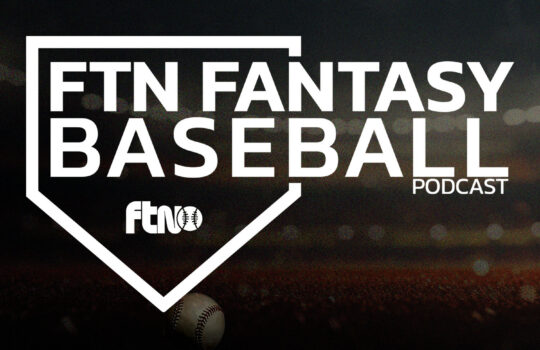

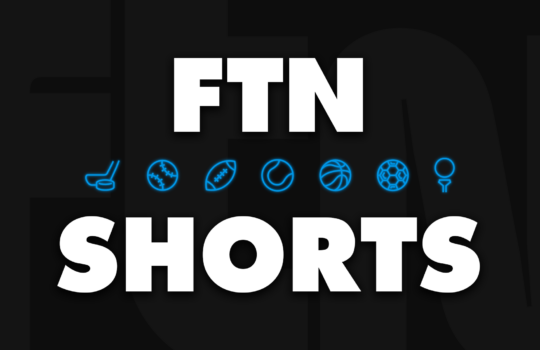
 New York Jets
New York Jets  New England Patriots
New England Patriots  Miami Dolphins
Miami Dolphins  Buffalo Bills
Buffalo Bills  Pittsburgh Steelers
Pittsburgh Steelers  Cleveland Browns
Cleveland Browns  Cincinnati Bengals
Cincinnati Bengals  Baltimore Ravens
Baltimore Ravens  Tennessee Titans
Tennessee Titans  Jacksonville Jaguars
Jacksonville Jaguars  Indianapolis Colts
Indianapolis Colts  Houston Texans
Houston Texans  Las Vegas Raiders
Las Vegas Raiders  Los Angeles Chargers
Los Angeles Chargers  Kansas City Chiefs
Kansas City Chiefs  Denver Broncos
Denver Broncos  Washington Commanders
Washington Commanders  Philadelphia Eagles
Philadelphia Eagles  New York Giants
New York Giants  Dallas Cowboys
Dallas Cowboys  Minnesota Vikings
Minnesota Vikings  Green Bay Packers
Green Bay Packers  Detroit Lions
Detroit Lions  Chicago Bears
Chicago Bears  Tampa Bay Buccaneers
Tampa Bay Buccaneers  New Orleans Saints
New Orleans Saints  Carolina Panthers
Carolina Panthers  Atlanta Falcons
Atlanta Falcons  San Francisco 49ers
San Francisco 49ers  Seattle Seahawks
Seattle Seahawks  Los Angeles Rams
Los Angeles Rams  Arizona Cardinals
Arizona Cardinals 
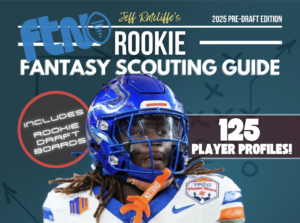

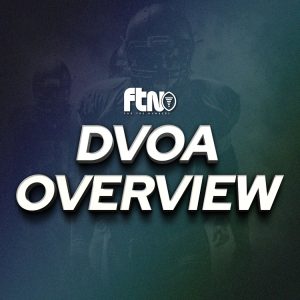
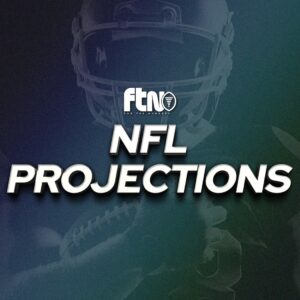


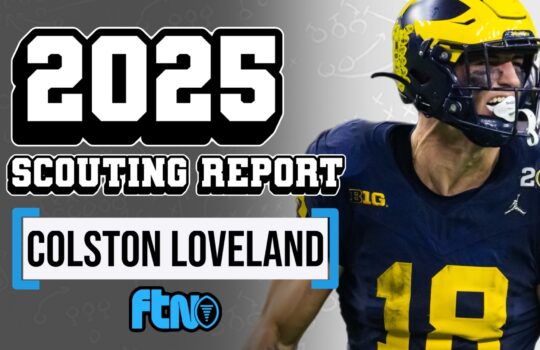


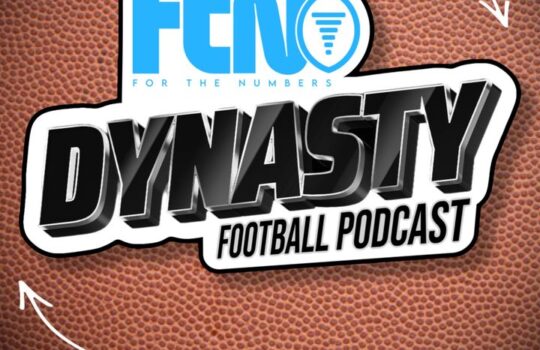
 Boston Celtics
Boston Celtics  Brooklyn Nets
Brooklyn Nets  Philadelphia 76ers
Philadelphia 76ers  New York Knicks
New York Knicks  Toronto Raptors
Toronto Raptors  Chicago Bulls
Chicago Bulls  Detroit Pistons
Detroit Pistons  Milwaukee Bucks
Milwaukee Bucks  Cleveland Cavaliers
Cleveland Cavaliers  Indiana Pacers
Indiana Pacers  Orlando Magic
Orlando Magic  Atlanta Hawks
Atlanta Hawks  Charlotte Hornets
Charlotte Hornets  Miami Heat
Miami Heat  Washington Wizards
Washington Wizards  Denver Nuggets
Denver Nuggets  Minnesota Timberwolves
Minnesota Timberwolves  Oklahoma City Thunder
Oklahoma City Thunder  Portland Trail Blazers
Portland Trail Blazers  Utah Jazz
Utah Jazz  LA Clippers
LA Clippers  Golden State Warriors
Golden State Warriors  Los Angeles Lakers
Los Angeles Lakers  Phoenix Suns
Phoenix Suns  Sacramento Kings
Sacramento Kings  Dallas Mavericks
Dallas Mavericks  Houston Rockets
Houston Rockets  Memphis Grizzlies
Memphis Grizzlies  New Orleans Pelicans
New Orleans Pelicans  San Antonio Spurs
San Antonio Spurs 



